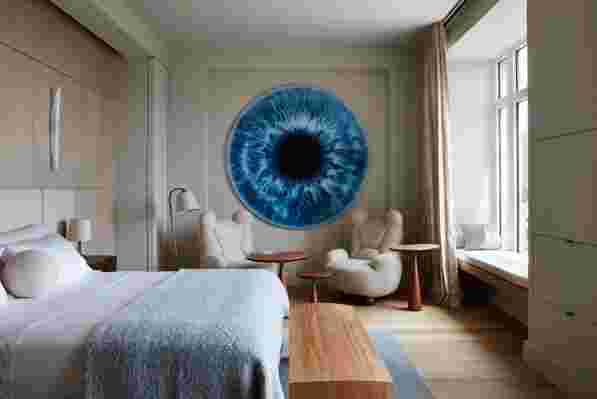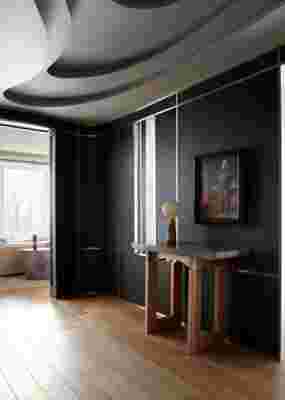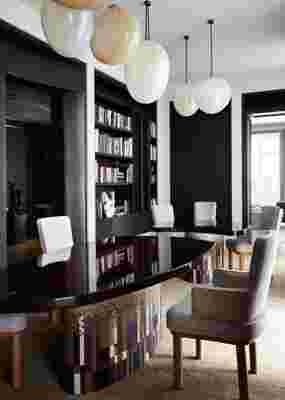When Anna Zaoui decided to renovate her family’s pied-á-terre in Manhattan, a three-bedroom apartment overlooking Central Park, she wasn’t set on a particular style or color palette, but she was certain about one thing: It had to be designed by Pierre Yovanovitch. “At first he told me he had too many things going on in France,” recalls Zaoui, cofounder of the online design gallery The Invisible Collection. “But I thought, It’s him or nobody, so I went to see him again, and finally he said yes.” Yovanovitch has emerged as one of the most in-demand designers in the world. His interiors, which feature an amalgam of subtlety and drama, of elegance and irreverence, represent a new kind of French savoir vivre .
Yovanovitch also creates furniture and is part of a small group of contemporary designers whose handmade pieces are as collectible as artworks. Zaoui had seen and fallen in love with the designer’s “Bear” armchairs, a series of whimsically pudgy seats inspired by “Goldilocks and the Three Bears.” “They were the pieces I wanted to have in the apartment for sure,” she says. “I had a cry when I received them; it was like fulfilling a dream.” Zaoui may have been visibly overjoyed to be working with Yovanovitch, but the collaboration was just as significant for the Paris-based designer, who had never undertaken a project in the United States. “Some rencontres can change your life,” he says. “Because of her, I now have an office in New York and I’m designing residences in Manhattan, the Hamptons, and Los Angeles.” (Yovanovitch is also on the roster of designers at Zaoui’s company, The Invisible Collection, an online platform that sells exclusive objets d’art and furnishings.)

Pierre Jovanovitch’s “Papa Bear” armchairs, seen here in Anna Zaoui’s bedroom, had been unavailable for purchase until The Invisible Collection began selling them. The three mushroom-shaped occasional tables were also designed by Yovanovitch. A very special custom work by British artist Marc Quinn, depicting Zaoui’s own iris, hangs on the wall.
When he first visited Zaoui’s apartment, a 30th-floor aerie inside a renovated condominium on the Upper West Side, Yovanovitch immediately noticed the stunning views of Central Park. And then he also observed that the layout did not do justice to these views. His design called for a complete reconfiguration of the space, including opening new doors to form an enfilade that draws the eye to certain windows, joining the study and dining room to create a large multipurpose space, and darkening the foyer to enhance the impact of walking into the sun-drenched living room and its sweeping panoramas.
“You enter through a hall with black metal walls, and as soon as you come into the living room, you have this very clear, very beige atmosphere,” says the designer. “We came up with different sequences in the apartment, different moments; it’s like you have to discover it.” Contrasts are an essential aspect of Yovanovitch’s aesthetic. The thread that runs through the home, he says, is a “combination of serenity and something very strong.” In the aforementioned main bedroom, for example, his “Papa Bear” chairs, with their soft shapes and even softer shearling upholstery, stand next to a bold, almost psychedelic cyan-and-black painting by Marc Quinn.


Zaoui and her husband, who are based in London but began spending more time in New York when their two children enrolled in East Coast universities, were drawn to the designer’s notion of contrasts. “I wanted something that could stand up to the energy of the city,” she says, “and at the same time to have this quiet, calming cocoon.”